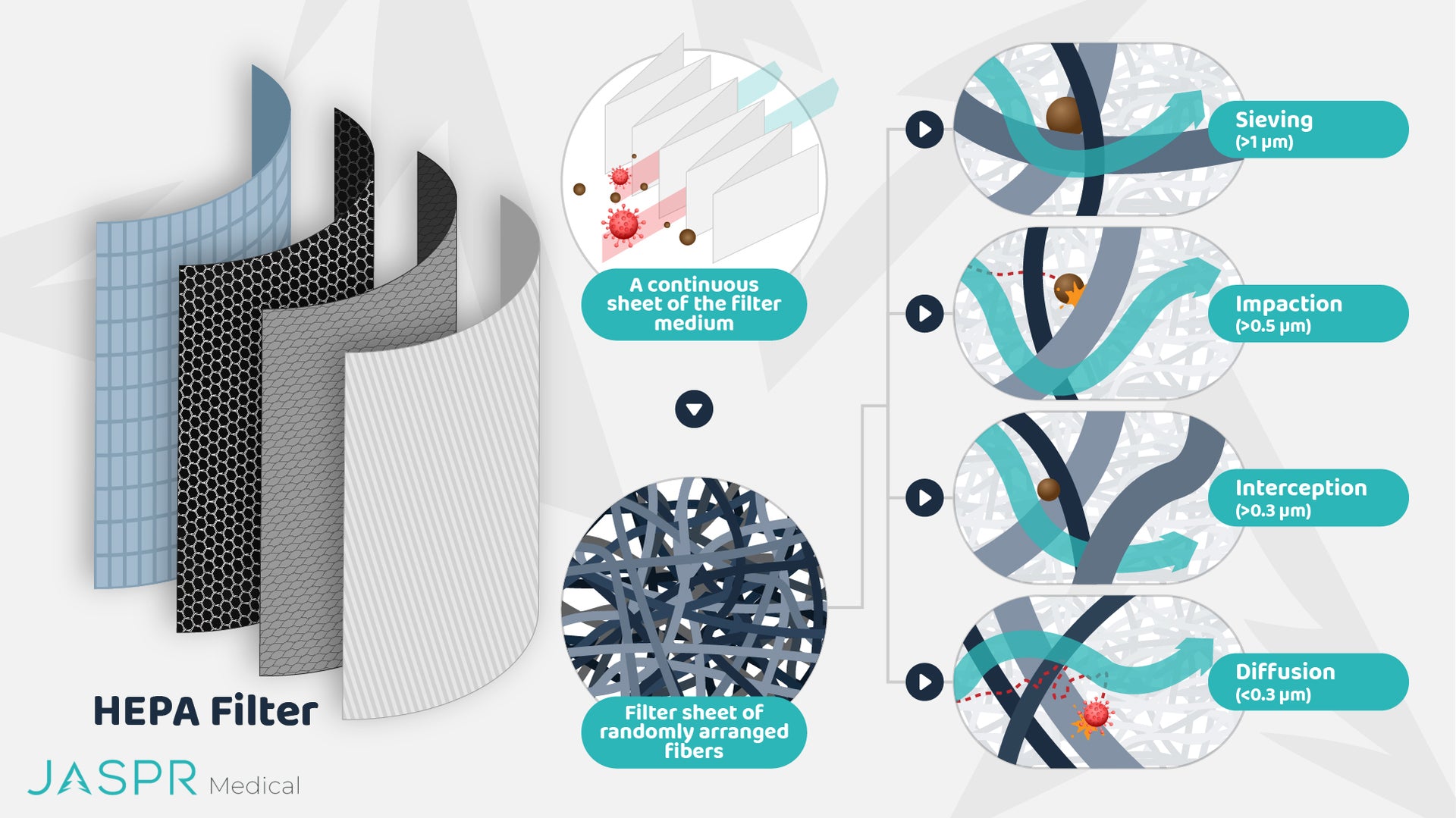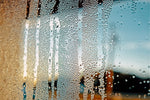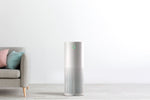The Ultimate Guide to Help You Choose the Best Air Purifier for Your Needs

Posted by Dr. Mansour Abdulbaki, PhD, Director of Science & Education
Air Purifier 101
With COVID-19 making the public hyper-aware of the risks of airborne viruses, a lack of awareness is no longer tenable for any business and a strategy that deals with the problem and allows you to bring your clients back with confidence is essential.
This buyer’s guide is meant to arm you with the knowledge to make an informed decision when considering air purification solutions for your business.
In general, air purifiers consist of a filter and a fan to bring in and circulate air so pollutants and particles are captured and the clean air is pushed back out as air moves through the filter.
Not all air purifiers are the same and selecting the right solution may seem complicated – but we believe that it shouldn’t be.
To help you decide on a solution we’ll review the importance of:
-
Filtration Mechanisms
-
Airflow Capacity
-
Noise Levels
-
Cost & Confidence
Filtration Mechanisms
HEPA Filters at their most basic level are fans with a dense web of fine fibers, but don’t think of them like screen door filters. More accurately they are random webs of micro fibers that inherently hold a surface charge to them. Each layer is so thin that the final few-millimeters-thick filter is actually composed of hundreds of layers of these webs - and that is key to their efficacy.
Even though there are pathways for air around the fibers, it is so convoluted that particles of all different sizes find their way to getting captured by at least 1 of 4 main mechanisms: sieving, impaction, interception, and diffusion.

Particles that HEPA filters capture
- Pollen: 200 to 10 microns
- Mold: 100 to 3 microns
- Dust: 100 to 0.05 microns
- Dust Mite Debris: 100 to 0.5 microns
- Bacteria: 100 to 0.1 microns
- Smoke: 50 to 0.01 microns
- Viruses-carrying particles: 10 to 0.02 microns
- Viruses: 0.25 to 0.02 microns
True HEPA (high efficiency particulate air) filters trace their origins back to WWII and the Manhattan project when physicists needed a way to make sure radioactive particles did not freely circulate about their workspaces. To be a True HEPA filtration device, an air purifier will have been tested and approved by one of several standardized test methods to achieve at least 99.97% filtration of 0.3 micron particles.
All of the certification standards require multiple tests on each and every single filter before approval. Some filters will label themselves as “HEPA-type” or “HEPA-like,” but these filters are not verified HEPA so may not be as effective.
True HEPA filters draw particles in via a fan and trap them in a web of fibers via 4 main mechanisms (illustrated above). These mechanisms combine to remove virtually all particles as shown by a NASA study and discussed below.
So, reports that describe HEPA filters as only filtering particles down to 0.3 microns have misunderstood the scientific description of the filter performance and are simply wrong. 99.97% capture efficiency at 0.3 microns is the lowest capture efficiency allowable for a True-HEPA filter. For all other particle sizes, the capture efficiency is higher, ranging from 99.97 to 99.9999 and 100% for the largest and smallest particles - even at the nanoscale.

Activated Carbon Filters
Activated carbon filters are highly porous, high surface area substrates good at capturing odor-causing molecules. They help with volatile organic compounds (VOCs) – molecular sized gases from the built environment and cleaning and disinfecting chemicals used on surfaces and instruments. Those chemicals are important for sanitizing surfaces, but they don’t belong in the air we breathe. While that disinfectant-”clean” smell may indicate clean surfaces, it also means that there are volatile organic molecules in the air. The more open and available pores are present in a carbon filter – the more “activated” it is, and the better it is at trapping gaseous pollutants. Granulated carbon filters will be more affected (have more surface area) and will be longer lasting than any spray-on or carbon coated type of filter. The amount of material and porosity will determine how well your carbon filter works and how long it lasts before being deactivated and needing replacement.
Ozone Generators
Ozone Generators, as the name implies, produce O3, a molecule that is very reactive and thus able to neutralize odors, kill mold, and react with different air pollutants to change their composition. This is because ozone is a higher energy free radical, the kind of molecules for which we take anti-oxidants like Vitamin C. US EPA reports explain that ozone can also cause health problems at high concentrations. In fact, studies from the US EPA show that low levels of ozone do not effectively destroy indoor air pollutants. Ozone is a well-documented lung irritant. The use of on-purpose ozone generators in any space is strongly opposed.
Electrostatic Air Purifiers
Electrostatic Air Purifiers charge particles in the air so they can stick to oppositely charged plates inside the device. These devices can also produce high amounts of ozone as a byproduct
Ultraviolet Germicidal Irradiation (UVGI)
Ultraviolet Germicidal Irradiation (UVGI) involves the use of specific wavelength UV-C lamps employed to damage the structure of fungal spores, viruses, and bacteria. The US EPA notes several studies in an extensive report on residential air cleaner technologies (jump to page 26) that demonstrate the potential usefulness of high energy UV-C irradiation for partial reduction of some microorganisms on internal surfaces of air cleaners but that action against airborne microbial targets is insufficient given the typical exposure times, sustained intensity, penetration ability of the light, and even resistance by some organisms. To be effective against the targets that are susceptible to UV-C, the exposure needs to be significantly longer than the few seconds seen in most air purifiers. Finally, UVGI would not be used independently of a HEPA filter so what additional benefit it brings is questionable.
Photocatalytic Oxidation (PCO/PECO)
Photocatalytic Oxidation (PCO/PECO) uses UV light and a photocatalyst to oxidize gasses and capture particles into CO2 and other benign gasses. Depending on the molecules, some PCO/PECO have been shown to generate formaldehyde, acetaldehyde, carbon monoxide, and nitrogen dioxide. While these technologies potentially serve to clean the inside of the PCO surfaces, HEPA filters are still required to capture airborne particulates. Most of the out-sized claims from devices with this technology have been retracted.

Air Flow Capacity
The capacity of any air purifying unit, no matter the technology, is critical to the effectiveness of the device and has a strong impact on your health and the business health of your practice. The CFM (cubic feet per minute) rating is a measure of the cleaning speed of the purifier for removing smoke, dust, pollen, and other particulates.
Your needs will depend on room size and usage, and desired ACH (air changes per hour). ACH is a calculation that takes into account the dimensions of a space and the value you select for your space will depend on several factors including local or national regulations. In general, you should aim for 5+ air changes per hour (and many more in some instances, such as dental operatories).
Size of your space matters. To ensure efficacy, you need a model designed to work in the room or space size you want to address. You should always choose a model that is designed for a larger area than that which you are trying to service. First, to ensure capacity and also to give you the option to operate it at a lower, quieter setting. In fact, operating an air purifier at lower speeds can increase its capture efficiency by orders of magnitude!
Noise Levels
Noise is an important factor to consider not only for your clients as they come and go but even more for your colleagues and staff who are working in the space for extended periods. Look for a unit with a noise level below 70 decibels at its fastest setting.
An air purifier is only useful if it is in operation. If it’s disruptive or a nuisance and users shut it off, it becomes just another piece of furniture.

Cost & Confidence
With all the performance possible, there are also practical considerations to weigh.
Consumables & Maintenance: How often will the different filters need to be changed? Are there parts that my staff and I need to clean? Due to their function as capturers of “stuff,” all filtration media will need to be replaced at some point. The shape, size, class, and amount of filtration media will all impact the frequency of this occurrence.
Warranty: What happens if a light, fuse, or some other component needs attention? Will I have to wait for someone to evaluate the problem, order parts, and schedule a fix? How much is maintenance going to cost me?
Support: Does the device maker provide guidance with selecting your solution? Do they offer an evaluation of your space to determine optimal placement? How many units will you need to ensure the device is delivering on your expectations? Do they provide you with any certifications or client-facing marketing materials to support patient confidence in joining or returning to your business?
The Essentials for Air Purifier Selection
Evaluate Your Options With These Filtering Questions
Filtration Technology
▢ Does the unit have a TRUE HEPA filter, H13 or above?
▢ Does it incorporate an activated carbon filtration component?
▢ Are you avoiding features that are ineffective and harmful?
Cleaning Capacity
▢ Airflow: What are the CFM levels at different speeds?
▢ How many air changes per hour will the purifier achieve in your space?
Noise Level & Interface
▢ What is the noise level of the unit at its high and medium settings?
▢ How many CFM do you achieve at an acceptable noise level for all day operation?
▢ Does the unit have an easy to view display to communicate status?
▢ How do you change settings? Do you have to do this manually?
▢ Does the unit display the current air quality to you and your staff or patients?
Cost, Confidence, & Convenience
▢ What is the total annual cost of ownership? In addition to cost of purchase, what is the cost of the consumables over 1 year? 3 years?
▢ What kind of maintenance is available?
▢ Is the vendor going to be a partner to me?
Back to Blog


